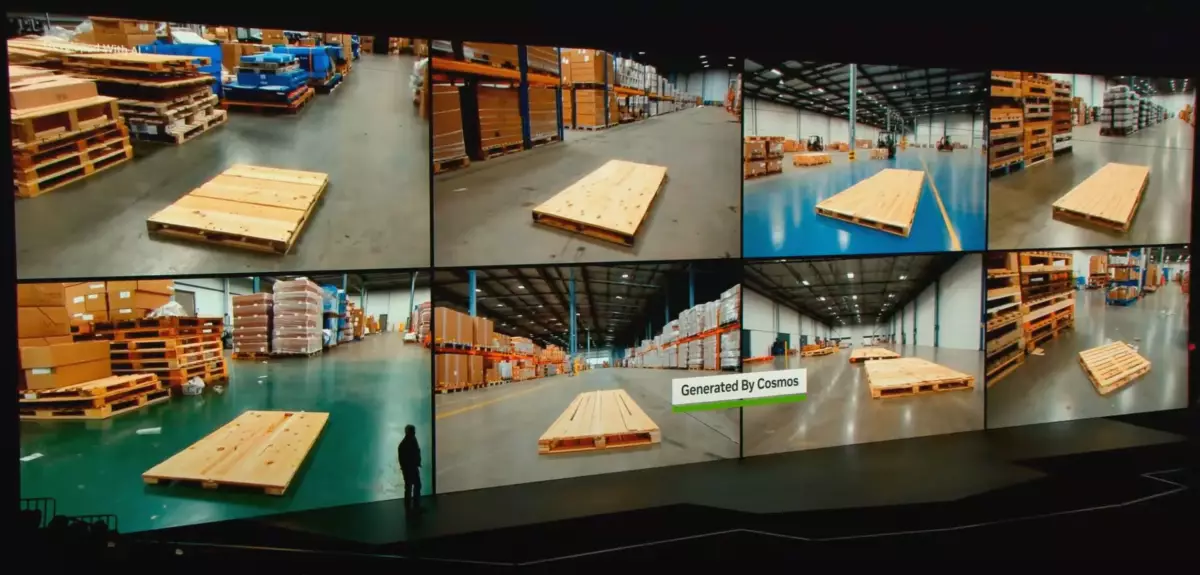In the rapidly evolving landscape of artificial intelligence, Nvidia has made a significant leap forward by introducing its family of world models known as Cosmos World Foundation Models (Cosmos WFMs) at CES 2025. This innovative collection of models aims to replicate the way humans internally represent and understand their surroundings, ultimately enhancing AI’s ability to generate sophisticated simulations and datasets that reflect real-world physics. As these models become widely accessible, their potential implications for various sectors, especially autonomous driving and robotics, are profound.
Nvidia’s Cosmos WFMs are designed to cater to a spectrum of applications, neatly categorized into three distinct tiers: Nano, Super, and Ultra. Each model tier varies in performance and output quality, with the Nano models emphasizing real-time applications and the Ultra models providing the highest fidelity outputs. This tiered approach allows developers and researchers, regardless of their operation size, to select the model that best fits their needs and capabilities. With parameter counts ranging from 4 billion to a staggering 14 billion, these models promise enhanced problem-solving skills, as more parameters typically correlate with improved performance.
The release of associated tools, including an upsampling model and a specialized video decoder for augmented reality, underscores Nvidia’s commitment to ensuring usability across a wide range of scenarios. Additionally, the provision of guardrail models ensures that AI applications adhere to ethical standards, making it possible for organizations to innovate responsibly.
One of the standout features of Cosmos WFMs is their training methodology, which involved an astonishing 9,000 trillion tokens derived from 20 million hours of diverse real-world data. This extensive dataset includes human interactions, various environmental scenarios, and operational data from fields such as industrial applications and robotics. However, Nvidia’s disclosure regarding the origins of the training data raises certain ethical concerns. Reports alleging unauthorized use of copyrighted content—specifically, YouTube videos—spark discussions about the legal and ethical implications surrounding the training of AI models.
An Nvidia spokesperson maintained that the Cosmos models do not infringe on copyrighted materials and that the data used for training is compliant with both legal standards and ethical norms. However, commentators argue that Nvidia’s stance relies heavily on the ambiguous nature of copyright law, particularly regarding fair use—a doctrine that permits the use of copyrighted works for transformative purposes. The future of these models may hinge on legal interpretations and court decisions relating to this doctrine, particularly as it applies to AI training processes.
Despite the looming debates around legality, the practical applications of Cosmos WFMs are clear and promising. Nvidia touts the models’ capabilities to produce “controllable, high-quality” synthetic data, essential for training autonomous vehicles and robotic systems. Organizations such as Waabi, Wayve, and Uber have already entered collaborations with Nvidia to explore how these models can optimize various functionalities—from video search capabilities to the development of AI models for self-driving technologies.
Uber CEO Dara Khosrowshahi emphasized the transformative potential of generative AI in reshaping the future of mobility, indicating the industry’s growing reliance on powerful data-driven solutions to create safer, more efficient autonomous driving systems. As more companies engage with the Cosmos WFMs, the synergistic growth of AI and transportation technologies could represent a pivotal shift in how we understand and interact with the world around us.
While Nvidia classifies Cosmos WFMs as “open,” the models do not conform to the strict criteria of “open source.” Open-source paradigms demand that models provide sufficient information for others to recreate them substantially and share critical insights about training data provenance. In this regard, Nvidia’s models fall short, as they have not disclosed comprehensive details regarding the training datasets, nor made the necessary tools for reconstructing the models readily available. This distinction raises important questions about transparency and accessibility in AI development, challenging industry norms about what constitutes openness in AI and potentially hindering community-driven innovation.
Nvidia CEO Jensen Huang expressed high hopes for the impact of Cosmos WFMs on robotics and industrial AI, comparing their potential transformative power to that of the Llama model in enterprise applications. However, the industry’s ability to fully integrate these models will depend on the balance between proprietary interests and the open collaboration necessary for broader AI advancement.
Nvidia’s foray into world models with its Cosmos WFMs represents both a technological breakthrough and a complex ethical challenge. As these AI models pave new paths in robotics and automation, ongoing debates about legality, accessibility, and ethical practices will shape the future trajectory of artificial intelligence as a whole. The success of these models will rely not only on their performance but also on how the industry negotiates the delicate balance between innovation and responsibility.

